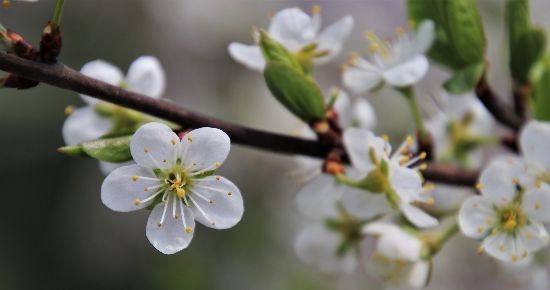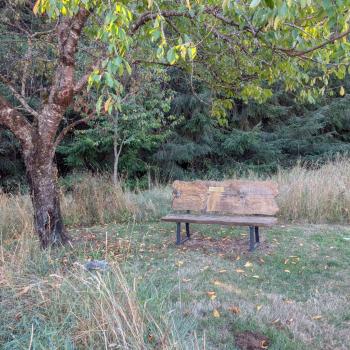Thelemites and Witches generally define ourselves as non-Christian so we wouldn’t normally think about celebrating Easter. But the Gnostic Mass and the Witchcraft circle are both eucharistic rituals which directly relate to the mysteries of Easter and Passover. You can think of them as a stack: the Witchcraft circle rests on the Gnostic Mass, which rests on the Christian Mass, which rests on Passover. These rites all tie the sacramental eating of food and drink to the promise of eternal life.
Quick disclaimer: I am an ex-Catholic, a Witch, and a priestess of Ecclesia Gnostica Catholica. I do my best to be respectful of all religions, however I am certain I do not explain Passover or Easter as a practicing Jew or Catholic would do. I encourage everyone to listen to practitioners of these faiths for deeper understanding of their mysteries.
Let’s start with Passover. This commemorates the exodus from Egypt (Kemet) and the founding of the Jewish people. They were released from slavery by pharaoh when God killed every first son in Egypt. The only sons who were spared were the ones sleeping behind doors marked by the blood of a sacrificed lamb. To commemorate this the people of Israel sacrificed a lamb in the temple in Jerusalem every Passover until the destruction of the temple Roman times. Today Jewish families celebrate Passover with a seder or ritual meal where specific foods are eaten commemorating the food shared by the people of Israel the night before they were freed from slavery.
Jesus Christ celebrated Passover. At the last supper he gave his followers bread and said “this is my body, which is given for you. Do this in remembrance of me. ” Then he passed around wine and said “this is the cup of my blood”. The next day he was crucified to death, and three days later rose from the dead. Christ offered himself as the sacrificial lamb to free humanity from the sin of slavery; at the end of time, those who accept that sacrifice will experience bodily resurrection and eternal life. This is commemorated every year at Easter, and at every mass, where the priest says the same words Christ said at the Passover feast. This is anamnesis: remembering the sacrifice.
The Gnostic Mass is also a eucharistic ritual. Aleister Crowley patterned his version on the Russian Orthodox service. He did not annotate his script, but Sabazius has provided annotations explicitly connecting the sections of the Gnostic Mass to their counterparts in the Christian service. In the Gnostic Mass the priest also says (in Latin) “this is my body” and “this is the cup of my blood”. But in the Gnostic Mass the priest says one additional thing: “this is my seed. The father is the son through the holy spirit.”
The sacrifice in the Gnostic Mass is the celebration of the continuity of life. My understanding is that the “son” sacrificed here is not Jesus Christ but the power of life to renew itself. This part of the Gnostic Mass is explicitly titled “Of the Mystic Marriage and the Consummation of the Elements”. In sexual reproduction women and men join physically to create the body of a new human being. This power is symbolized in the Gnostic Mass by the dip of the lance into the cup.
It’s not just the son that is the power of life, it is also the father, “IAO Sabao” or “Lord God of Hosts”, which is here the “continuing knowledge from generation unto generation”. Crowley uses the term “seed” for this; we might think of DNA. So the father, IAO Sabao, is the son, the priest, through the holy spirit, the power of life. This is available not just to one son of God, or to a priesthood representing him, but to everyone. In fact every human being is a living example of the power of life to reproduce itself. We are all embodied DNA.
In both the Christian Mass and the Gnostic Mass the priest does the consecration. One thing I love about the Gnostic Mass is that it brings the priestess back into the world. Remember that Crowley wrote this in 1914; the modern Witchcraft and Neo-Pagan movements have emerged since that time. In the Christian Mass the mother of God is a human woman who conceived non-sexually. This makes the sacrifice and resurrection a one-time event and valorizes virginity. Crowley instead valorized women’s sexuality and physical reproduction as the engine of resurrection. Sexual reproduction requires a physical woman, and a ritual which celebrates the renewal of life requires a priestess.
While the Gardnerian and Alexandrian Witchcraft that emerged in England in the 1960s has many inputs, it is clear that the Witchcraft circle was influenced by the Gnostic Mass. In the circle priestess and priest together dip a knife into a cup just as the lance dips into the cup in the mass. In Eight Sabbats for Witches Janet and Stewart Farrar give this consecration: “As the athame is to the male, so the cup is to the female; and conjoined, they become one in truth.”
The consecration of the cakes is even more clearly imported from the mass. In the Gnostic Mass the priest says “Lord most secret, bless this spiritual food unto our bodies, bestowing upon us health and wealth and strength and joy and peace, and that fulfillment of will and of love under will that is perpetual happiness.” The Farrars give this consecration for the cakes: “Queen most secret, bless this food into our bodies; bestowing health, wealth, strength, joy and peace, and that fulfillment of love which is perfect happiness.” I love the shift from Lord to Queen, God to Goddess. If our symbols are metaphors for human reproduction, the cup has a lot more work to do than the lance does!
There is an interesting difference between the Gnostic Mass on the one hand, and both the Christian Mass and the Witchcraft circle on the other. In the Catholic Mass the priest consecrates wafers to be distributed to the congregation. In the Witchcraft circle the priestess and priest consecrate wine and cakes to be shared by the coven. However that isn’t necessarily what is happening in the Gnostic Mass. At an E.G.C. conference last year I was introduced to the idea that the priest consecrates his own wine and cake but not those of the congregation. Each congregant individually takes a cup and cake and consumes it, and in the process actually does the consecration, with the example of the priest as a guide. One thing I love about this interpretation is that it puts the power in the hands of every person of every gender. Ultimately you don’t need a priest or a priestess to engage in eucharistic ritual, every one of us carries the power of life and can do the magick for ourselves.
The Christian Mass commemorates a resurrection. Is this also true for the Gnostic Mass, and is it true for the Witchcraft circle? One of the meanings of the term “anamnesis” is “memory of a past life”. Thelema and Witchcraft share the idea of reincarnation. The Farrars say of a loved one who passed beyond the veil, “And ye shall meet, and know, and remember, and love them again.”
I know that there are people who explicitly work the magick of the mass to bring the memory of this life into the next, although I don’t know if this is what Crowley intended the mass to do. In the Book of the Law Nuit promises “certainty, not faith, while in life, upon death”. My own memory of my last life has sustained me with certainty throughout this one. It is a powerful magick.
Easter and Passover are rituals relating to the spring equinox. Passover begins on the 15th day of the lunar month of Nisan; in 2019 the festival begins April 19 and goes through April 27. Easter is celebrated on the first Sunday after the first full moon after the vernal equinox; this year Easter falls on April 21. Witches also celebrate spring equinox as one of the eight sabbats. Aleister and Rose Kelly Crowley held a ritual to Horus on the spring equinox in 1904, and received the Book of the Law April 8-10, which Thelemites celebrate every year.
All these eucharistic rituals promising rebirth happen during the season in which the life of the earth is renewed. While there are significant differences between Jews, Christians, Thelemites and Witches, there are also commonalities; meditating on Easter reveals our connections.

















